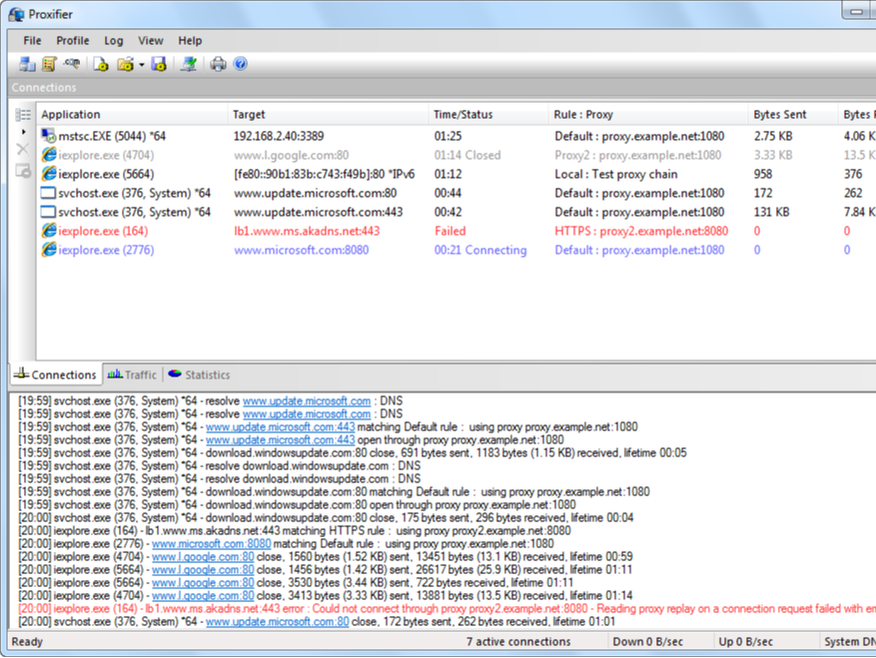

The connections will be made to the original target. Direct: processes the connection directly (omits any processing). Chain: processes the connection through the proxy chain. Options: Proxy: processes the connection through the proxy server.

Separate the individual ports with a semicolon ( ), and use a minus sign (-) to define a range.Īction: defines how Proxifier should process the connection if it matches the rule. You can use any integer from 1 to 65535 (2 16-1). Target ports: To match the rule, a connection should connect to a port from this list. The %ComputerName% constant is automatically swapped with the local computer name during the processing. Use a minus sign (-) to define the range.ĬIDR notation (e.g., 192.168.0.0/24) is supported for IPv4. IPv4/IPv6 addresses can be specified as a range. Wildcards (masks) are supported, and you can use them with “?” matching any symbol and “*” matching any substring. Separate individual addresses with a semicolon ( ).

You can specify host names (DNS names) and IPv4 or IPv6 addresses. Target hosts: To match the rule, a connection should connect to a host from this list. Use the Browse button to browse for a file and add it to the list. It is possible to specify a process ID using a notation such as pid=1234. You can use wildcards (masks) with “?” matching any symbol and “*” matching any substring. Separate the individual names with a semicolon ( ) and use double quotes (") for names containing spaces. When the rule is disabled, Proxifier simply ignores it.Īpplications: a list of executable file names with or without the path that correspond to the programs whose connections should match the rule.

You can use any text that is meaningful to you.Įnable: Use this check box to enable/disable the rule. When you edit a rule or add a new one, the following window appears. Alternatively, you can double click to edit a rule or use your keyboard’s “Delete” key to remove it. With the corresponding buttons, it is possible to Add a new rule or Clone, Edit, or Remove an existing rule. You can enable/disable the rules with the check box and change a rule’s action. You can change the order with the arrow-like buttons on the right side of the window. Proxifier scans rules from top to bottom, so the order of rules is important. You can edit or remove this rule, but it is best to keep it enabled unless you are absolutely sure that you need to tunnel connections to 127.0.0.1 through a proxy. Some applications, such as Firefox, may depend on loopback connections. When this rule is enabled, Proxifier does not tunnel local (loopback) connections on the computer. You can change only the action for this rule.įor example, if you assign a proxy server as an action for the Default rule and define no other rules, Proxifier will process all connections through this proxy.īy default, each profile also has a predefined rule called Localhost. Proxifier uses it when no other rule matches the connection. The Default rule cannot be changed as it is a special rule. To access this feature, click Proxification Rules in the Profile menu or the corresponding item on the toolbar. The rules can be based on application names, target hostnames or IP addresses, or port numbers.Īpplications and targets can be specified as wildcards, and ports can be specified as ranges. Each connection can be processed directly, processed through a proxy/chain, or blocked. This feature allows users to define how Proxifier processes certain connections. Migration from Version 3 Proxification Rules


 0 kommentar(er)
0 kommentar(er)
